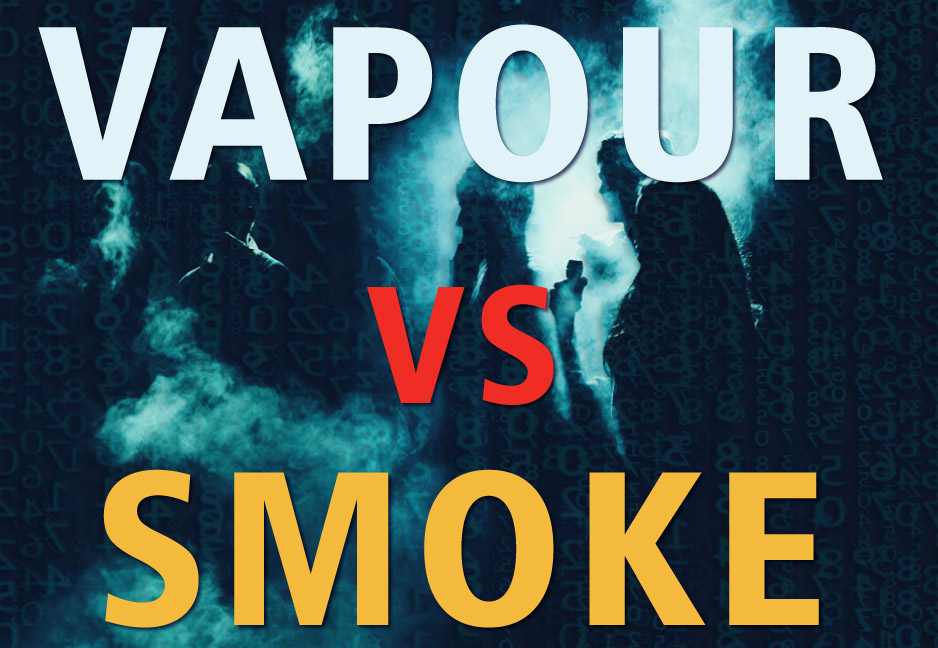
The Difference Between Vapour and Smoke: Why Vaping Is Not Smoking
Have you ever heard someone say “vape smoke”? It’s a common mistake, but there’s no such thing. Smoking and vaping may look similar, but the substances they produce are entirely different. Cigarette smoke is created by burning tobacco, releasing thousands of toxic chemicals. Vapour, on the other hand, is produced by gently heating e-liquid, creating a clean aerosol that contains far fewer ingredients. Let’s explore the key differences between vapour and smoke.
What Creates Smoke?
When you light a cigarette, you create smoke through combustion - the burning of tobacco and paper. Burning any material dramatically changes its chemical composition. Cigarette smoke is made up of thousands of chemicals, including carbon particles, tar, carbon monoxide, ammonia, and known carcinogens. Many of these substances are toxic, which is why smoking is so harmful to your health.
What Creates Vapour?
Vaping is different. When you use an e-cigarette, the device heats your e-liquid to produce vapour. Technically, this vapour is an aerosol – a fine mist of liquid droplets suspended in the air. Unlike smoke, vapour isn’t created by burning anything, which means it doesn’t contain tar or the same harmful byproducts of combustion. Instead, it carries the same molecules found in your vape juice: propylene glycol (PG), vegetable glycerin (VG), flavourings, and nicotine (if you choose).
Because vapour particles are liquid rather than solid, they don’t behave the same way smoke does - and they don’t leave behind the same dangerous residue.
Vapour vs Smoke: Key Differences
Let’s break down the main differences between cigarette smoke and e-cigarette vapour:
-
Chemical Composition
-
Cigarette smoke contains over 7,000 chemicals, including dozens of known carcinogens.
-
Vapour is made from a handful of ingredients that are considered safe for inhalation in regulated products: PG, VG, flavourings, and optional nicotine.
-
-
Smell and Odour
-
Smoke clings to clothes, hair, cars, and rooms for hours or even days.
-
Vapour dissipates quickly, leaving behind only a light scent – often fruity, sweet, or minty depending on your e-liquid.
-
-
Residue and Staining
-
Smoking indoors stains walls, ceilings, and furniture yellow due to tar and smoke particles.
-
Vapour doesn’t leave tar behind, meaning no stubborn stains on your home or car.
-
-
Health Impact
-
Smoking is linked to lung cancer, heart disease, and countless other serious conditions.
-
Vaping eliminates the combustion process, making it a less harmful alternative for adult smokers who switch completely from tobacco.
-
Should You Switch to Vaping?
If you’re searching for the difference between vapour and smoke because you’re thinking about quitting cigarettes, the contrast is clear. Switching to vaping means:
-
No more lingering smoke smell
-
No tar or carbon monoxide
-
No yellow stains on walls and fabrics
-
A way to enjoy nicotine without inhaling thousands of toxic byproducts
Vaping isn’t risk-free, but evidence shows it’s significantly less harmful than smoking. For adult smokers who want a cleaner, more enjoyable alternative, making the switch can be life-changing.
When you compare vapour and smoke, the difference couldn’t be clearer. Cigarette smoke is the product of burning tobacco, which creates thousands of harmful chemicals, unpleasant odours, and stains on your clothes, car, and home. Vapour, however, comes from heating e-liquid, producing a clean aerosol that dissipates quickly without the toxic byproducts of combustion.
For adult smokers looking for a less harmful alternative, switching to vaping can make a real difference. You’ll enjoy nicotine without the smoke, tar, and lingering smell - all while exploring a wide range of e-liquid flavours and modern vaping devices. If you’re ready to move away from the negatives of smoking, now is the time to give vaping a try.


